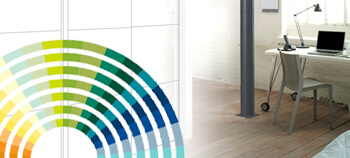The Northern Design Awards 2015 recently took place and winners were announced at the show studded event at the Titanic Hotel in Liverpool. The City of Sunderland won an award for its recent development of Keel Square in the city centre. The redevelopment has given the whole city a new life and created a civic heart within an otherwise ran down area.
Keel Square is a celebration of the city’s industrial heritage, to record the international significance and the colossal scale of what the people of Sunderland achieved in the history of shipbuilding. The distance from the public square to the riverside is almost exactly the length of the longest ship ever built on the Wear: the Naess Crusader, at approximately 292m. Following this line, and marked by a specially illustrated 600mm wide band of granite, ‘The Keel Line’ includes the names of over eight thousand ships built in Sunderland’s shipyards since 1786.
The rear of the Keel Line houses the imagined ship, in the form of a landmark sculpture, “Propellers of the City’. Created in collaboration with Broadbent Studios, the sculpture takes the form of a giant propeller made of glass and bronze. It bears the faces of over 300 of Sunderland shipyard workers, all submitted by their families, who dedicated their lives to building ships, and building Sunderland’s reputation as the best in the world.
Drawing upon local knowledge, the project was led by Sunderland City Council in-house multidisciplinary design team, from inception through to completion on site. Conceptual design work began in late 2011 with the scheme completed in Spring 2015.
The cost of the project, compromising of key utility diversions, major Highway construction and the creation of Keel Square totalled £13.5million and was part funded by European Regional Development Fund.
This project set out to deliver a scheme of the highest quality and this would not be compromised upon. Natural stone materials such as granite, Yorkshire Gritstone and porphyry were specified to complement the surrounding sandstone buildings. Sculptural features and street furniture utilised high quality materials such as hardwood timber and bronze. The expanse of the area has been partially broken by fountains, tree planting and a raised stage, to leave an uncluttered central area of 40mtr x 25mtr suitable for civic events, whilst providing a space that also functions on a day-to-day basis.
The design was a play on the ‘traditional square’ approach, with a grid paving feature to the heart of the scheme, utilising granite and porphyry with clean cut sides providing a modern crisp touch. Yorkstone was laid to the periphery of the square to compliment surrounding buildings and emphasises the central paving feature.
The redevelopment has received positive feedback received, especially via social media and the emphasis on the sense of place has been well received by the local community, who are so proud of their own industrial heritage. In additional the scheme works as an attractive and stand alone space, with improved visitor numbers and various events planned. The Square has proved to be more than just a new civic space, it has also helped renew existing business confidence in the City and has set the standard for future regeneration.






